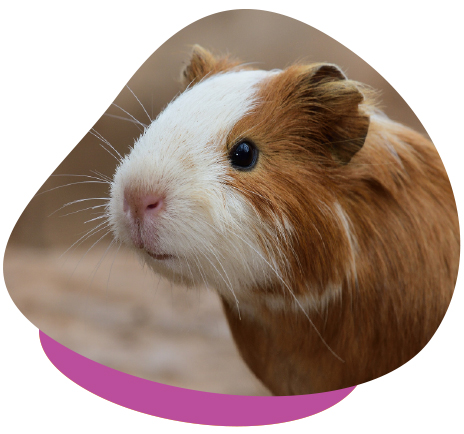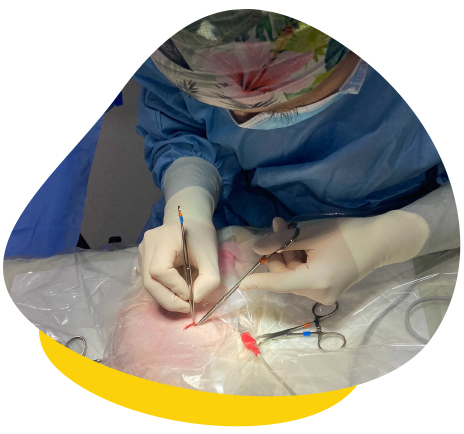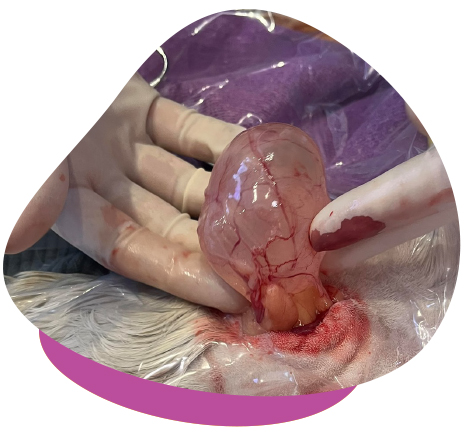Cystic ovaries most commonly start to occur in female entire guinea pigs aged 2-4 years. Various studies have identified that up to 76% of female guinea pigs between 2 and 5 years of age have cystic changes present on their ovaries.

What Are the Signs My Guinea Pig Could Have Cystic Ovaries?
Common signs of a functional ovarian cyst secreting hormones include bilateral symmetric hair loss in the flank region, crusty nipples and being irritable or seeming uncomfortable in their abdomen. Ovarian cysts may be associated with uterine disease and can become significant space-occupying masses if left untreated.
Guinea pigs with large cysts may show signs of anorexia, depression and lethargy. Some guinea pigs show no signs at all and the cysts are only picked up on their health examinations by a guinea pig vet.
Ovarian cysts often increase in size with time, and the pressure of the cyst on other organs may cause pain and associated gut stasis. Adhesions can also form, which can cause problems at a later date.
How Is This Condition Diagnosed?
The diagnosis of an ovarian cyst is generally confirmed by palpation, an abdominal ultrasound or radiographs (x-rays).
What Treatment Options Are Available for Cystic Ovaries?
- Exploratory abdominal surgery to remove the cyst and perform an ovariohysterectomy or ovariectomy; this is generally the best option for resolving the problem as the ovaries are totally removed.
- Ultrasound-guided aspiration of the cysts under sedation provides a temporary solution however carries some risk.


Can Ovarian Cysts Be Prevented?
Ovarian cysts can be prevented by having your guinea pig sterilised (de-sexed) before they occur.
If you have any questions, please don’t hesitate to contact your local Unusual Pet Vets team.

